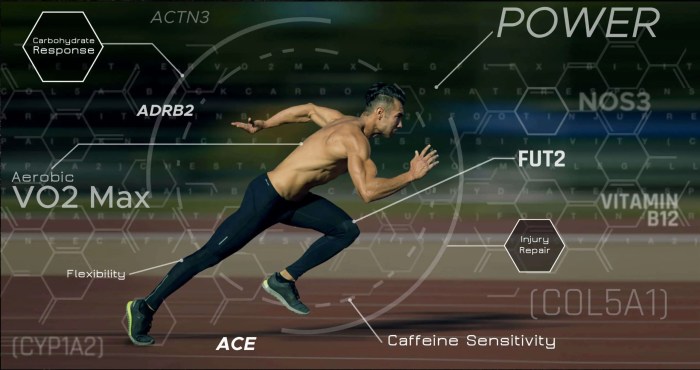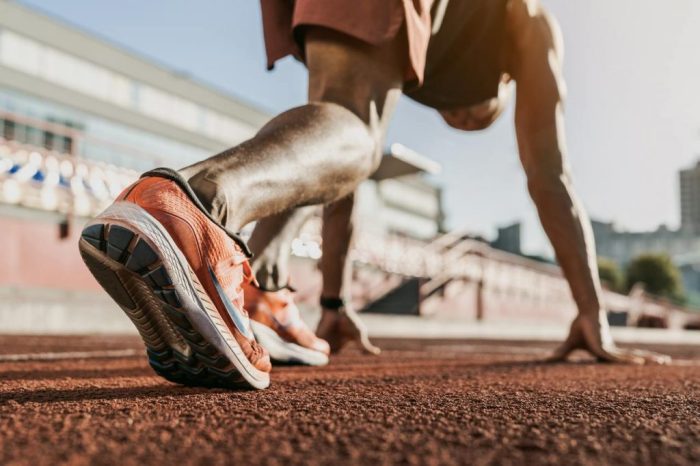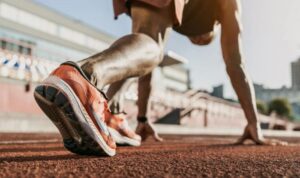Athletic performance improvement is key in the world of sports, impacting careers and success. From training techniques to technology, let’s dive into the factors that can take athletes to the next level.
Exploring the crucial elements that contribute to better performance and how athletes can push their limits to achieve their goals.
Importance of Athletic Performance Improvement
Athletic performance improvement is crucial for athletes as it directly impacts their ability to compete at a higher level, achieve their goals, and excel in their respective sports.
Enhanced Career Opportunities
Improved performance can open up new career opportunities for athletes, such as securing professional contracts, endorsements, and scholarships. This can lead to financial stability and long-term success in their chosen sport.
Mental and Physical Training
Both mental and physical training play a significant role in achieving better athletic results. Mental training helps athletes develop focus, confidence, and resilience, while physical training enhances strength, speed, and endurance. Combining these two aspects can result in peak performance on the field or court.
Factors Affecting Athletic Performance

Proper athletic performance is influenced by several key factors that play a crucial role in determining an athlete’s success. Factors such as nutrition, training, recovery, sleep quality, and stress management all have a significant impact on how well an athlete performs.
Nutrition
Nutrition is a fundamental factor that directly affects an athlete’s performance. The food and fluids that athletes consume provide the energy needed for training and competition. A well-balanced diet rich in carbohydrates, proteins, fats, vitamins, and minerals is essential for optimal performance. Proper nutrition also aids in muscle recovery, injury prevention, and overall well-being.
Training
The type, intensity, and consistency of training sessions greatly influence an athlete’s performance. Training programs tailored to specific goals, sports, and individual needs can enhance strength, endurance, speed, agility, and skill level. Regular and structured training routines are vital for improving athletic performance and reaching peak fitness levels.
Recovery
Recovery is a critical aspect of athletic performance that is often overlooked. Adequate rest, proper hydration, and recovery strategies such as stretching, foam rolling, and ice baths are essential for muscle repair and growth. Prioritizing recovery allows the body to recover from intense workouts, reduces the risk of injuries, and improves overall performance.
Sleep Quality and Stress Management
Quality sleep and effective stress management are crucial for optimizing athletic performance. Sleep is essential for physical and mental recovery, hormone regulation, and cognitive function. Lack of sleep can impair reaction times, decision-making skills, and overall performance. Additionally, managing stress levels through relaxation techniques, meditation, and mindfulness practices can enhance focus, concentration, and performance under pressure.
Training Techniques for Performance Enhancement

When it comes to improving athletic performance, utilizing specific training techniques is essential. These methods focus on enhancing strength, flexibility, and conditioning to help athletes reach their full potential.
Importance of Strength Training
Strength training plays a crucial role in athletic performance improvement by increasing muscle mass, power, and overall physical strength. It helps athletes generate more force, improve speed, and prevent injuries.
- Weightlifting exercises like squats, deadlifts, and bench presses are effective for building strength.
- Bodyweight exercises such as push-ups, pull-ups, and planks can also be beneficial for overall strength development.
Importance of Flexibility
Flexibility is key for athletes to achieve optimal performance as it enhances range of motion, reduces the risk of injuries, and improves overall movement efficiency.
- Dynamic stretching exercises like leg swings, arm circles, and lunges help improve flexibility and prepare muscles for activity.
- Static stretching post-workout can help maintain and improve flexibility over time.
Importance of Conditioning
Conditioning is vital for enhancing endurance, cardiovascular health, and overall stamina. It allows athletes to perform at peak levels for extended periods of time.
- Interval training, such as high-intensity interval training (HIIT), can help improve cardiovascular fitness and endurance.
- Circuit training involving a combination of strength and cardio exercises can enhance overall conditioning levels.
Technology and Tools for Monitoring Performance
Technology and tools play a crucial role in monitoring athletic performance, providing valuable data insights to optimize training programs and enhance overall athletic capabilities.
Wearables and Tracking Devices
- Wearable devices such as fitness trackers, smartwatches, and heart rate monitors can track various metrics like heart rate, steps taken, distance covered, and calories burned during training sessions.
- These devices provide real-time feedback to athletes, allowing them to make immediate adjustments to their training intensity, duration, and recovery.
- Data collected from wearables can be analyzed to identify patterns, trends, and areas for improvement in an athlete’s performance.
Data Analytics for Training Optimization
- Data analytics tools can process the vast amount of data collected from wearables and other tracking devices to create personalized training programs for athletes.
- By analyzing performance metrics, coaches and trainers can identify strengths and weaknesses, set specific goals, and track progress over time.
- Advanced analytics techniques can also predict potential injuries, optimize recovery strategies, and improve overall performance outcomes.
Role of Biomechanics in Analyzing Movements, Athletic performance improvement
- Biomechanics involves the study of the mechanical aspects of human movement, providing insights into how athletes can improve their performance through optimal movement patterns.
- By analyzing biomechanical data using motion capture systems and sensors, coaches can identify inefficiencies in an athlete’s technique and suggest corrective measures.
- Understanding biomechanics helps athletes enhance their agility, speed, power, and efficiency in performing specific movements related to their sport.
